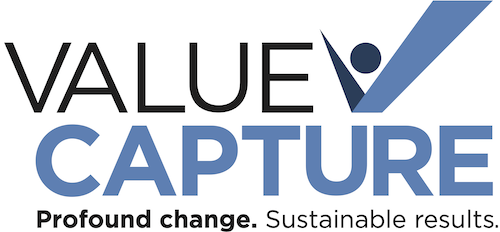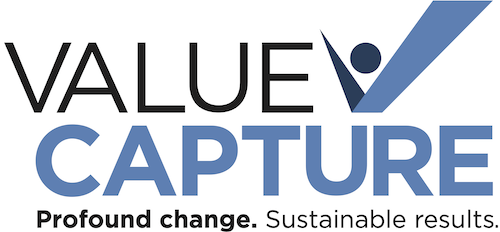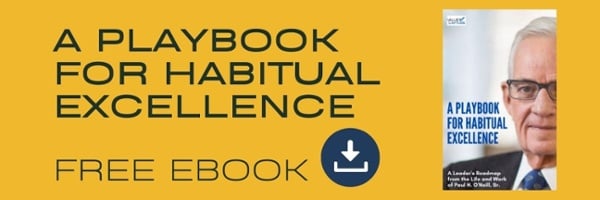Theoretical Limits
Reaching the limits of performance through a culture of habitual excellence
Paul O'Neill's Phrase
Our mentor, and our first non-executive chair of Value Capture, Paul H. O'Neill, Sr. used the phrase "theoretical limits" quite often. Let's explore what he meant by driving to the "theoretical limits of performance" -- with "zero harm" being just one example.
The Theoretical Limits of Performance
Here is an excerpt from a Paul O'Neill speech, as captured in the free eBook A Playbook for Habitual Excellence.
The Power of Theoretical Limits
"One idea that I’ve found of great utility, beginning when I was in the Executive Office of the President at the Bureau of the Budget, which turned into OMB, is an idea that I call the concept of a theoretical limit.
When I was there, in an executive office, we had all these unbelievable issues and problems. I found there was great value in saying to myself when someone was proposing that we start a new program or activity,
“If it were perfect, what would it look like?” For me, the theoretical limit is perfect. It’s an idea that applies to everything.
If you ask yourself, “What’s the theoretical limit for injuries to workers?” the answer is zero. What’s the theoretical limit for hospital-acquired infections? It’s zero. That’s the theoretical limit.
One of the things that I found really useful about this concept of a theoretical limit is it’s not used to bludgeon people.
It’s used to set up an intellectual construct so that you can take a measurement of where you are and compare it to what perfect looks like. It drains the swamp so you can see stuff that you couldn’t easily see otherwise.
You can take a lot of conceit out of, “Hey, we’re 98 percent perfect.” What about the 19 people who died? That’s a different way to think about it. The theoretical limit, you say to yourself, “What about the 19 people who died?” They don’t want to do that. It unleashes your intellectual ability to recalibrate how you think about what you’re doing."
"If God doesn’t keep you from doing it, you can do it." -- Paul O'Neill
Lessons from Alcoa
The standard that we should have for what we’re doing where we’re making things... this is in some ways easier than the work that you do. Where we’re making products, here’s the standard:
24 hours a day, we should make perfect product that goes to the customer and does what we said it would do, 24 hours a day.
24 hours a day means you get perfect utilization of your capital equipment, and the human beings, and the energy you consume. There’s no waste. There’s no repair work. There’s no downtime.
It’s out there, the theoretical limit. When I started going around the plants and saying this concept of 24 hours a day and said to people, “Where do you think you are on the curve of 24 hours?”
They said, “98 percent.”
I said, “Wow! That’s really terrific. I spend a lot of time in plants around the world and not many plants are really at 98 percent. Let’s test this proposition a little bit.”
I’d say, “Do you ever have equipment that breaks down and causes you not to be able to make product?”
“Oh, yeah.”
I said, “Well, that’s interesting. How could you possibly be at 98 percent?” They said, “Well, we don’t count that time.”
[laughter]
“Say, that’s really interesting. So, do you do preventive maintenance here?”
“Oh, yeah. We do. On Friday afternoon — this is in Warrick, Indiana — we close the plant at four o’clock. Turn everything off. From four o’clock until midnight, we do preventive maintenance on everything. We fix everything. We oil things. We change out equipment, there are bearings that are worn out and stuff like that.”
I said, “That’s really great. I would like to know one more thing. During that period, when you’re doing preventive maintenance, what’s the longest elapsed time that you’re actually doing an individual task, like changing out filters or changing out a bearing or something?” The answer is 36 minutes.
If you can imagine, if you’ve got the people who are doing the work to do the preventive maintenance and the longest elapsed time is 36 minutes, to be generous if you only used an hour for preventive maintenance instead of eight hours for preventive maintenance, which was the standard, you in effect give yourself back seven hours worth of additional production capacity without spending a penny, just with an idea.
It’s about ideas. It’s not about some magic bullet. It’s about ideas that make your work more satisfying, productive, and value-added.
The Potential for Greatness and the Limits of Our Potential
More from Mr. O'Neill:
"Let me say it more sharply to you. I believe, maybe you don’t, that if we operated at the limit of our potential in terms of doing everything right every time in every encounter between providers and patients, that we could reduce the cost of medical care by 50% and simultaneously see an enormous improvement in the health care status of individuals. It’s not easy to do or we already would have done it. But I do believe it is possible to move in that direction and to move there quickly.
Now you might wonder “how do we do it?” I have to tell you, I believe that it’s hard to find examples of institutions or organizations achieving goals that they haven’t aspired to.
And so, I’m one who believes you start with a notion of setting goals at the theoretical limit of what’s possible.
And so, to take individual examples, I believe it’s possible to perform in such a way that there are zero medication errors, and the zero nosocomial infections, and zero readmissions of CABG patients, and whatever else you’d like to imagine could be, and ought to be, zero.
And I have to tell you, it is really a privilege to address this audience because all of you in one way or another are leaders and yesterday, we talked a little bit about “what are you going to do on Monday morning?”
I would hope on Monday morning, wherever you fit in this puzzle, you would think about what’s the description of a theoretical limit that you as a leader can and should put in place. Because I think without that beginning it’s awfully hard to set your course and keep it straight every day.
Gary [Kaplan] mentioned safety at Alcoa. And one of the things that I’ve hammered away at as I’ve been involved directly in health and medical care is to try to get people in this business, the health and medical care business, to understand both the notion of the theoretical limit and why it is valuable to think about the safety of people who are providers.
Let me see if I can connect the logic for you. Again, this is for you who are leaders.
I think organizations only have the potential for greatness if the people in the organizations can say yes without any reservation every day to three propositions.
- The first proposition is I’m treated with dignity and respect every day by everyone I encounter. They would be able to say “yes” to that. And let me say that means without regard to educational attainment, or rank, or ethnicity, or any other identifier that we all have — that you can say every day without any reservation I’m treated with dignity and respect by everyone I encounter.
- Secondly, that everyone in the organization can say every day without any reservation — I’m given the education, and training, and encouragement, and tools that I need in order to make a contribution — and this is the important part — that gives meaning to my life. Not that makes the organization more profitable or something, that I’m able to make the contribution that gives meaning to my life.
- And the third proposition is people need to be able to say “yes” to is that someone noticed that I did it.
In any organization I know of that has real greatness or the potential for greatness, the people in it can say yes to those three propositions every day.
And then there is a potential for doing great things together. Without that, it’s very difficult. And then let me connect that to what I said to you about the theoretical limits and let me use medication errors as an example for connection.
Theoretical Limits
At least in my experience, as I wander around and look at the medication error problem, I think that we’re still limited by prescribers, by doctors, who think it’s not their duty to write in a legible way or to eliminate abbreviations.
What I would say to you about that is — the highest form of disrespect one person can pay to another is to basically say I’m better than you — maybe not articulated this way, but by action — to say to the recipient of a scribble, “It’s your problem if you can’t read it.”
Now why I tell you all of that is because there are some things that we need to do together. Because as I pushed on this issue, some hospital administrators have said to me, “I know we shouldn’t let this happen in our organization” — that where we have habitual cases, where the order writer refuses to make it bulletproof, that we’re not going to have any mistakes because of misinterpretation.
If I really put down the hammer, sometimes the people who are habitual abusers will say, “Fine, if that’s the way it’s going to be, I’ll take my patients someplace else.”
You know if we, for example in Southwestern Pennsylvania or you wherever you are as a community, had the will to say in our community, maybe 40 or 50 or 100 hospitals, we’re going to band together and we’re all going to put down the law that is not okay to create the danger that’s resident in us, in a scribbled order, the people who would abuse each other and show no respect for the recipient of their orders wouldn’t have any place to go.
That takes some working together. And I must tell you I really do believe there is a lot that we should and want to do to work together on what I call a pre-competitive collaboration. Now, let me see if I can illustrate for you what I mean by that.
Gary [Kaplan] told you that at Alcoa we became one of the safest companies in the world. That’s not quite right.
We became THE safest company in the world."
The Role of Leaders
As Mr. O'Neill said, it starts with leadership:
"We created what I call the “real time safety information system.” And we had a requirement in our organization — 36 countries and 350 locations — that in the event anyone had an injury including a first aid injury, it would be identified and recorded within 24 hours.
The people that were involved would work together as a team to identify the root cause of the problem, and it would be put into cyberspace for 140,000 people to learn from within 24 hours — so that we didn’t have to learn the same lesson over and over and over again, one institution at a time, one location at a time. We had the capacity to take one incident and turn it into learning for 140,000 people.
And one of the things that I must tell you I’m most proud of at Alcoa is that when I left the lost workday rate was 0.2, which means statistically you could work at Alcoa for 800 years without having a lost workday case.
Today the lost workday rate at Alcoa is 0.12, which means they got better after I left.
And I would suggest to you a real mark of leadership is whether the organization you left behind is better after you’ve left then when you left.
In a nutshell, what that’s all about is systemic change. It’s not about dictated change or change as a consequence of an autocrat. It’s about the enablement of systemic change, which I believe is the real role of leaders.
There are a couple of other things I believe about leadership.
One is that true leaders believe that they’re responsible for everything, especially for things gone wrong.
They’ll get the credit for things gone right maybe. But I think leaders should really have a sense of burden so that for example, if you’re a hospital administrator and something goes wrong in your institution, it’s not because someone else didn’t do the right thing, it’s because you didn’t lead properly.
Because, at least in most organizations, if you’re the leader, you have the responsibility to identify the people and give them training education they need, give them the tools that they need. And if something goes wrong, it’s not their fault it’s your fault — there’s something wrong in how you exercise your leadership.
So I think leaders need to have this important notion, that they’re the standup people who accept, along with the right to make decisions, the responsibility to be at the end of the line for everything that happens in the institution and therefore, not only to set goals at the theoretical limit but to create the conditions and the processes so that everyone in the organization can let their energy flow toward achieving the theoretical limits.
One of the things that’s really important for leaders to do is to take away excuses.
And as we have worked on these issues of quality, in the broadest sense, in Pittsburgh, I found the same set of excuses that I found at Alcoa when I started talking about how our organization could achieve this unique condition of no one ever being hurt. And the excuses go like this — these are without regard to the industry or institution — they’re always the same.
The first set of excuses is “it’s not possible.” You know, for example, people will say, “What we want to do is eliminate unnecessary infections.” You know, I don’t like the modifier. “Unnecessary,” for me, may, in fact, be a cause that we haven’t yet figured out how to eliminate.
But once you permit your mind to believe that some things are unavoidable, you’ll never work on the problem. So, we need to be clear about not having modifiers. And for example, again in the area of safety, language is important.
One of the things that I worked hard on at Alcoa was to get the language right. If you think about the implications of the word "accident," it has with it the notion that it’s nobody’s fault. But if you change the characterization of things gone wrong to “incident,” then we can work on it.
And I would warrant this to you — God didn’t decide we should hurt ourselves. And therefore, theoretical limits need to be set within the boundaries of what God will permit us to do and to imagine, and not to forgive ourselves for not having the answers. That’s how you achieve what I believe is true greatness in an organization."
Leaders Need to Take Away the Excuses
Once you’ve done that, again you need to work on the excuses. People will say, “We can’t afford it, it’s not in the budget.” And again, one of the things for leaders to do is take away excuses.
How do you do that? By saying you know that I’m so confident that we can accomplish this ideal state that when we identify a root cause that costs us some money to eliminate hazards for workers, we’re going to fix it immediately. We’re not going to hide behind “it’s not in the budget.” It’s more important than anything and everything else and therefore we’re going to fix it right now.
That might seem a little scary to you. Believe me, it works. It really does work to take away the excuses.
And then you find out it doesn’t cost a lot of money to do things right. It takes systems, organization, and the will of the people.
I labor you hard on the subject of safety for this reason. Because I want to get you to a point of hopefully agreement that providers’ safety is something we should work at.
Let me tell you the facts about the health and medical care industry in the United States. According to the most recent data, which is at the end of last year, the lost workday rate in health and medical care delivery people in the United States is 3.3. That’s 27 times higher than Alcoa where the metal flows at 2000 degrees and there’s clanking, moving overhead machinery.
I would say to you, there’s no excuse for healthcare providers to have an injury rate that is 27 times higher than it’s already been demonstrated it’s possible to be.
And so, when I go when I look at the dashboards people are creating about measures of effectiveness, which is an advancing state and what’s going on in medical care in the United States. You know, it’s been very hard for me to find any dashboard that includes provider safety. And I’m really puzzled by that."
Questions for Discussion
- In your mind, is theoretical limit thinking energizing or demoralizing? Why?
- What is standing in your way of theoretical limit thinking in your organization?
- What are three tangible benefits your organization would realize if theoretical limit thinking were the way business is done?
Talk to your colleagues and leaders about these questions...
Related Podcasts
From our "Habitual Excellence" podcast series:
Habitual Excellence Episode #4: Ken Segel on Zero Harm and Theoretical Limits
Segel: "I think that are probably three major reasons why the concept of Zero Harm and aiming for the theoretical limit are both powerful and really important. The first is when we're trying to keep bad things from happening and improve so that they don't, it turns out it's really, really important to have a moral clarity that we can offer anybody in anybody in an organization.
And the goal of zero for harm provides that moral clarity.
A third point about a theoretical limit thinking and aiming for zero harm —and that goes hand in hand with the breakthrough thinking — is the innovation thinking. If you were going for zero, if you are going for zero harm there is literally no way to do it unless you are continuously learning from things gone wrong or gone.
And it is this process of continuous learning, continuous sharing, ideally using the scientific method that produces the level of learning that can produce reliable systems."
Kedar Mate and Patricia McGaffigan on Workforce Safety & Patient Safety
McGaffigan: "And Paul was literally the first person I met beyond the staff of my new organization. I will never forget that day. He kicked it off with his emblematic gusto and passion, and he decried the inexplicable state of workforce harm in our profession, as well as the complacency that existed with our acceptance of workforce harm as collateral damage, which was so far away from Paul's realization that theoretical limits of zero were the place that we really needed to be.
Related Webinar
From the webinar presented by Mike Bundy of Prisma Health, who was deeply influenced by O'Neill and Value Capture:
"How much time could we give back to [nurses], and then how close to the theoretical limits could they execute nursing processes in with the time we gave them back? What impact could that have on qualitative outcomes?"
Read more:
Transformational Leadership Cannot be Delegated
Origins of the Phrase and the Thinking
A few years back, our CEO Ken Segel asked O'Neill about the "intellectual and practical roots of his Theoretical Limits principle" and this was the reply:
"The theoretical limits notion is an amalgam of ideas coming together. In 1957, I took a course in mathematical economics and learned about linear programming and more broadly mathematical programming — new ways of thinking about complex problem formulation and solving, ideas that came out of the second world war.
Coupled with Douglas McGregor's ideas about people in organizations, I believe the title of his book is the Human Side of Enterprise. And Chris Argyris's writing — he was at Yale. And the so-called "whiz kids" who worked at the McNamara Pentagon, where they used cost-benefit analysis to judge military programs. And David Novick's book on Planning Programing and Budgeting.
When I went to the Office of Management and Budget (OMB) in January 1967, I found it very helpful to me to do analysis of government programs to ask myself the question,
"What does perfect look like?"
It was especially useful in putting forward legislative proposals because when changes were proposed by members it was possible to frame the "cost" of change.
A further evolution of this notion came from studying [W. Edwards] Deming principles and [Joseph] Juran ideas and Peter Drucker's ideas. [Phillip] Crosby's work came at the tail end of this.
It was my own experience at International Paper that led me to conclude that management by financial numbers was a mistake, that the financial outcomes were a consequence, not a proper objective. And that financial results were a consequence of how well an organization performed on its non-financial measures."



